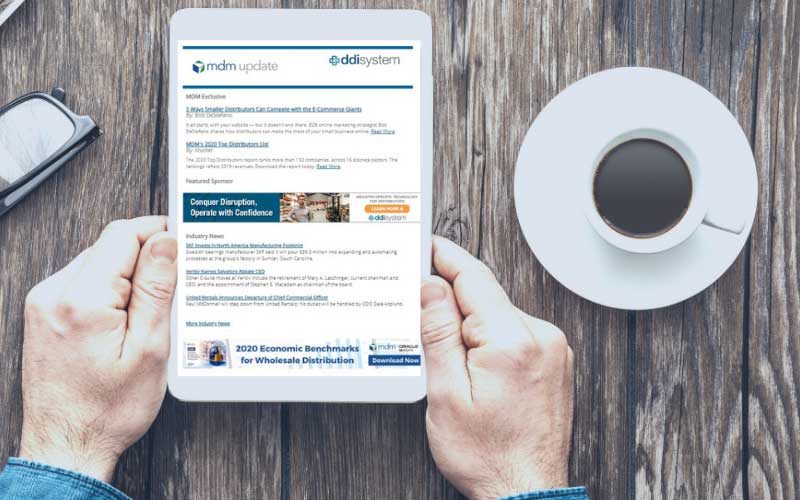Key Accounts are a sizable and important segment for most mid-sized and larger distributors. While the exact definition of key accounts differs depending on the distributor, we’ll define key accounts as large volume customers with multiple locations (e.g., branches, dealerships) that span multiple sales territories or regions. Key accounts often involve multiple buyers and influencers at the headquarters, region, district and local levels. For some distributors, key account sales volume can make up 80% of total sales volume, but there is no set rule around this. Sometimes, key accounts are referred to as strategic, enterprise or national accounts.
When managing a key account program, distributors must ensure that they receive higher than market growth from the key accounts to justify what typically is a high-cost model. Done right, key account programs create longstanding strategic partnerships between distributor and customer. Managed incorrectly, however, key account programs gobble up revenue-generating resources from other growth initiatives and increase cost to serve for the entire sales model.
There are three elements that explain why key account programs need constant measurement and engagement.
Element 1: Sales Accountability
For distributors with key account programs, the first question to ask is, “Who on the sales team is ultimately accountable for the sales volume for the entire key account?”
Most often, the accountable party is a single key account manager (KAM) who is compensated based on the aggregate volume (across all localities) of that key account. Sometimes, however, that accountability is spread across multiple sellers, sales managers or executives.
Alexander Group data back up the notion that, “When everyone is in charge, no one is in charge.” Without a single individual managing the performance of a key account, funnel size shrinks, win rate drops and service requests take longer to be resolved. In short, growth slows when one person isn’t directly responsible for the growth in a key account “logo.”
Recommendation: Select one individual (KAM) to be accountable for a key account’s revenue/GP$/sales performance; make the main measure in that individual’s sales comp plan reflect that accountability.
Element 2: Coordination through CRM
In most key account programs, a single account will be covered by several marketing, sales and service resources spread across geographies. Providing a seamless and consistent buying experience for key customers requires a high degree of coordination. Part of the coordination process rests with the KAM ― he or she is the individual who typically sets the strategy for the key account at the corporate level and works with sellers covering branches to create an execution approach.
Also see: “How Remote Should Your Remote Sales Team Be?”
To effectively manage the plan, KAMs will benefit from a well-established reporting and communication cadence that features standing calls to review CRM outputs. All customer-facing resources (e.g., sales, marketing, service, project management) can attend these calls and the agenda can include the following topics:
- Sales performance update (% to YTD goal, annual goal)
- Update on issues requiring immediate resolution or escalation
- Pipeline review (based on CRM reports) to discuss new, existing and lost opportunities (with post-mortem/loss discussion)
- Marketing and business development update
- Corporate update on people movement, strategic changes, M&A
- Voice of the field, including updates from branch, region and district offices
Nothing erodes the confidence of executives at the customer when a KAM does not have the most up-to-date information on the account. Implementing a weekly CRM-based account review meeting is the first step in preventing this risk.
Recommendation: Task KAMs with setting up a weekly standing call with all relevant teammates; ensure team has access to CRM system.
Element 3: Digital and Remote Channels
Just because key accounts are considered “high touch” models does not mean that engagement should be exclusively face-to-face. Based on changing buyer needs and preferences, incorporating digital and remote resources and tools can help drive closer partnership at an advantageous cost to serve. Examples may include:
- Digital account-based marketing that uses corporate or industry triggers to send specific messages or content.
- Automated CPQ tools or digital sales resources able to assist customers with configuration, price and quote workflow.
- Access to digitized product information for use in Building Information Modeling (BIM) and Computer-aided Design (CAD).
- Access to an online marketplace where customers can buy products from a network of the distributor’s strategic partners.
- Inside or remote sales roles to provide dedicated coverage to branches in hard-to-access geographies.
- Customer-exclusive webcasts or virtual trainings.
- Dedicated Customer Success Representatives.
Distributors have a growing toolkit to provide customized and flexible coverage to customers. Digital tools and remote resources come at a cost, so distributors will want to first understand how their key accounts want to virtually interact before implementing large scale technologies.
Recommendation: Conduct buyer research on key accounts to understand the viability of digital and remote channels; create a technology roadmap to enhance connectivity and collaboration with key accounts.
Key account programs offer distributors the ability to build strong partnerships with their most important clients. To prevent going down the path of becoming a high-cost-to-serve sales model, it is imperative that the three key account program elements are managed and measured consistently and properly.
Andrew Horvath is principal at Alexander Group. Reach him at [email protected] or visit Alexander Group’s website at alexandergroup.com.
Related Posts
-
The company says sales for the third quarter of 2021 were SEK 20.1 billion (US$2.3…
-
Each of 3M’s divisions had strong showings in the third quarter of 2021, with safety…
-
Fastenal reported daily sales for the month also were up 1.2%, but safety sales dropped…






1 thought on “Why Key Account Programs Need Constant Measurement”
Andrew’s observations are spot on. There are many challenges in distributors where the branch based sales reps are seen as the primary and most important role. The KAM can often be seen by the branch sales rep as a threat. If a distributor views and tries Andrew’s approach and the results fail to meet expectations, check to see if the field is hostage to old history. This is corrected with leadership.